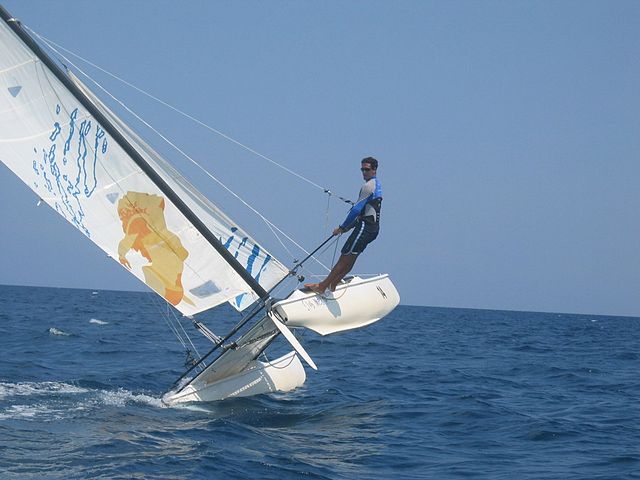A pontoon bridge, also known as a floating bridge, uses floats or shallow-draft boats to support a continuous deck for pedestrian and vehicle travel. The buoyancy of the supports limits the maximum load that they can carry.
The Bergsøysund Bridge uses concrete pontoons
Mughal emperor Akbar the Great riding the ferocious elephant Hawa'i, pursuing another elephant across a collapsing bridge of boats (left), in Basawan and Chetar Munti's "Akbar's Adventure with the Elephant Hawa’i", dated 1561
Roman legionaries marching across a pontoon bridge, a relief scene from the column of Emperor Trajan (r. 98–117 AD) in Rome, Italy (monochrome, from the photographs by Conrad Cichorius)
Roman Legionaries crossing the Danube River by pontoon bridge, as depicted in relief on the column of Emperor Marcus Aurelius (r. 161–180 AD) in Rome, Italy
Floats are airtight hollow structures, similar to pressure vessels, designed to provide buoyancy in water. Their principal applications are in watercraft hulls, aircraft floats, floating piers, pontoon rhinos, pontoon causeways, and marine engineering applications such as salvage.
The British racing seaplane Supermarine S.6B (1931)
An anchored raft-like platform used for diving, often referred to as a pontoon
Floats on a Cessna 208 Caravan 1 floatplane, Gloucestershire Airport, England (2017)
Small open catamaran.








